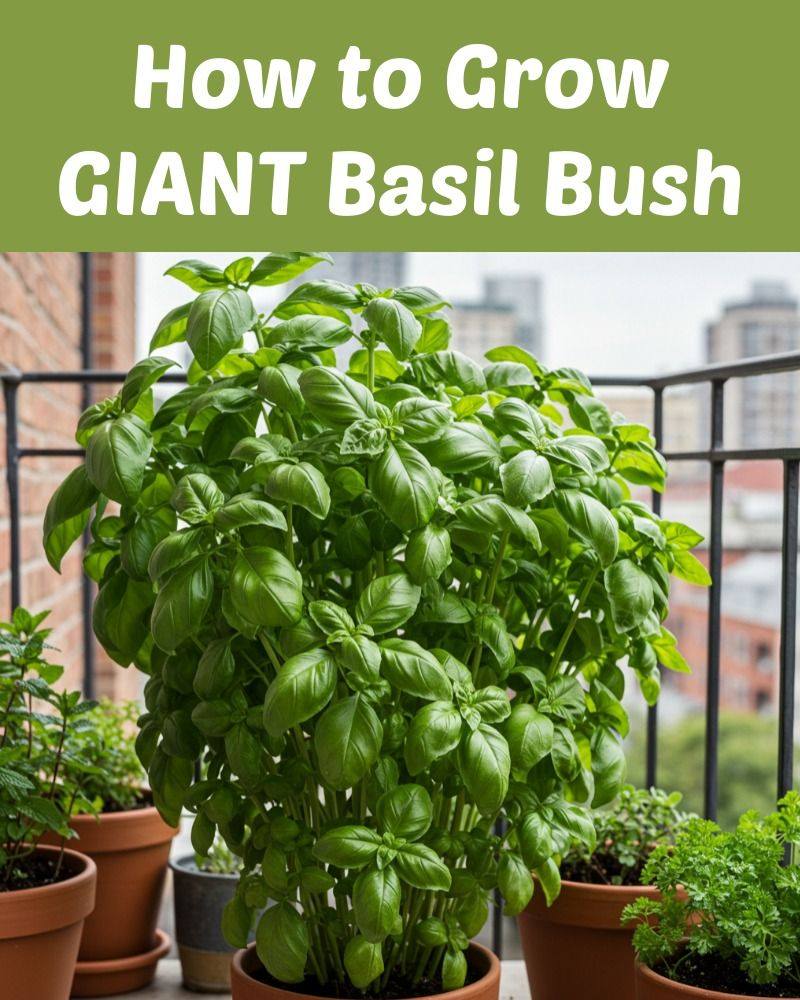ADVERTISEMENT
If you’re growing basil in a container, ensure the pot has good drainage holes to avoid water buildup at the bottom.
For Complete Cooking STEPS Please Head On Over To Next Page Or Open button (>) and don’t forget to SHARE with your Facebook friends
5. Prune and Pinch for Bushiness
One of the keys to growing a giant basil bush is regular pruning and pinching. Here’s how to encourage your basil to grow more vigorously and develop a full, bushy appearance:
- Pinch Back the Tips: When your basil plant is about 6 inches tall, pinch off the top few sets of leaves. This will encourage the plant to branch out and grow more leaves from the side stems. Don’t worry—this won’t harm the plant. In fact, it promotes a bushier, more robust growth pattern.
- Remove Flower Buds: Basil tends to bolt (flower) as it matures, which can cause the leaves to become bitter. Regularly pinch off any flower buds as soon as you notice them. This will redirect the plant’s energy into producing more leaves instead of flowers.
- Regular Trimming: As the plant grows, continue to trim and prune any long or leggy stems. The more you trim, the more your basil will grow side branches, leading to a fuller, larger bush.
6. Fertilize Your Basil
To encourage healthy growth and help your basil plant reach its full potential, feed it with a balanced, organic fertilizer. Use a fertilizer that’s rich in nitrogen, which supports lush, green leaf growth. Here are some tips for fertilizing your basil:
- Once a Month: Fertilize your basil every 4–6 weeks during the growing season to keep it nourished.
- Compost: If you prefer organic methods, you can also add compost to the soil. Compost provides a slow-release source of nutrients, helping your plant thrive.
Avoid over-fertilizing, as this can lead to excessive leaf growth at the expense of flavor.
7. Protect from Pests
While basil is generally resistant to pests, it can still attract aphids, whiteflies, and other small insects. To keep your basil healthy and growing large, take these steps:
- Check Regularly: Inspect your basil plant regularly for any signs of pests. If you find aphids or other bugs, rinse the leaves with water or use insecticidal soap.
- Companion Planting: Plant basil alongside other herbs or vegetables like tomatoes, peppers, or oregano. Some plants naturally repel pests, helping keep your basil safe.
8. Harvesting Your Basil
Once your basil bush begins to mature, it’s time to start harvesting. For a giant, thriving plant, don’t pick all the leaves at once. Instead, harvest leaves gradually by removing the top few leaves or branches, allowing the plant to continue growing and producing new foliage.
You can also harvest by cutting entire stems, but be sure to leave enough of the plant intact to continue growing. Always harvest basil in the morning for the best flavor, as the leaves are most aromatic and flavorful before the heat of the day.
Conclusion
Growing a giant basil bush is easier than you might think with the right care. By choosing the right variety, providing plenty of sunlight, using well-draining soil, watering consistently, and regularly pruning and fertilizing, you can enjoy an abundant harvest of fresh basil all season long. Whether you’re using it in your favorite recipes or creating a fragrant addition to your garden, a giant basil bush will be a beautiful and rewarding plant to grow.
So, grab your gardening tools and start your basil-growing adventure today! Your future self will thank you with a bounty of fresh, aromatic basil at your fingertips.
